Mouse traps capture interest at Tale or Treasure meeting in Wellsville


Mouse traps capture interest at Tale or Treasure meeting in Wellsville




 BY KATHRYN ROSS
BY KATHRYN ROSS
ANDOVER — Ever wonder who the first settler was in your town, or what industry was the most prominent or if there was a murder or trial? You can find out at the Allegany County Historical Center and Museum in Andover.
While the ACHCM is the repository of information and paraphernalia from all 26 towns across the county, it also houses a wealth of information about families, architecture, books the oil industry and photos.
Yet, like most organizations these days, what it doesn’t have is wealth of volunteers.

Ron Taylor, chairman of the Allegany County Historical Society, and the head curator of the center/museum said, “Before COVID-19 we had enough volunteers, but since we had to close those volunteers found other things to do, so that now we are in need of volunteers.”
The center/museum has been in Andover for the last six years.

Ideally, he said, if every town historical society would offer one volunteer per month, there would be enough to man the museum while it is open and to help with the business of the museum when it isn’t open.
A volunteer could be asked to greet and guide visitors, file, transcribe, website publishing, general office work, research, write, mainte-












nance or cleaning.


The good thing about working at the Allegany County Historical Center and Museum is that volunteers wouldn’t go in cold turkey. Taylor said they will train volunteers for a specific job or a variety of jobs.



“What you enjoy doing is what we enjoy having you do,” Taylor said.
The center/museum is open from 10 a.m. to 3 p.m. Wednesdays, Thursdays, and Fridays.
Volunteers could also work on Tuesdays and on Saturdays should the need arise. The open hours may expand with the summer season.


To volunteer to work at the center/museum just make a phone call to Taylor at (585) 610-8668 or send an email to alleganychs@gmail.com
“We need more help,” Taylor said adding that the county museum is not only an interesting place to work, but also a fun place to work.


LYNDONVILLE — It fell short of successfully defending its team title, but at Saturday’s Section 5 Class B3 wrestling championships, Bolivar-Richburg had plenty of familiar faces atop the podium.

Five B-R wrestlers won an individual crown, highlighting local involvement in Section 5’s class tournaments.
With just nine wrestlers, the Wolverines didn’t quite have the points to match champion Lyndonville or runner-up South Seneca. B-R did, however, send eight through to the state qualifier,
and its leaders were as dominant as they have been all year.





“We just didn’t have the horsepower on the back end,” B-R coach Andrew Taylor said.




“We put five in the finals and they all ended up winning. They did what we planned for and they know what they need to do going into next weekend.”
Gary McDowell (110 pounds), Trey Buchholz (126), Tavyn MacDonell (160), Caden Allen (215) and Trent Sibble (285) all claimed a sectional title. McDowell and Buchholz each won their finals match by major decision and the other three each won by fall.

It was Sibble’s third







crown, Allen’s first and second for the other three.


Teegan Sibble placed third at 110 for B-R, while James Gleason was fifth at 102 and Jack
Mitchell was fifth at 172. Saturday marked the seventh consecutive year B-R finished among the top three teams at sectionals, dating back to 2016.
“They all showed up and wrestled excellently. We have a really good core of kids,” Taylor said. “Everyone



Wolverines continued on PAGE 2
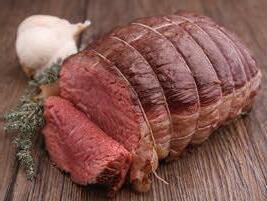
➡Wolverines continued from PAGE 1





looks at wrestling as just a sport but it’s a tight-knit family. We put a couple first-year kids on the podium this year that had never wrestled before. All the kids work together and try to make themselves better. We’re just there to finetune everything.”
In Class B2, Wellsville matched B-R by sending eight wrestlers onto the state qualifier.

































































The Lions finished fifth in the team race with 133.5 points and Canisteo-Greenwood, which scored a whopping 265, claimed the class for the sixth consecutive year. Fillmore/ Keshequa finished 12th with 27 points.









Xander Outman (160), Shane Davidson (189) and Gabe Black (215) each finished second to highlight Wellsville’s results. Jayden Acker was third at 110, David Clark was fourth at 118, Jack Cicirello was fifth at 132, Brayden Riley was fifth at 138 and Matt Ritter was sixth at 152.




In its first postseason as a combined program, F/K placed three at sectionals. Graham Howe was fifth at 110, Alivia




Cartwright was sixth at 118 and Gage Hartman was sixth at 189.
“I thought we had a very successful year as a combined team,” F/K coach Mike Witkowski said. “We were kind of starting over. I thought we ran some good practices the last few weeks where we saw kids improving, but ultimately, we need to build off each other. Any given wrestler needs to make those around them better, and we started to see that at the end of the year once we had some foundational things built.”

Class B2 wasn’t a class Fillmore or Keshequa would have been in prior to their merger. For a program seeking a restart like Witkowski’s was, however, teaming up with coach Mike Uveino’s Keshequa group was an ideal step forward as the Eagles try to re-build.
“We ran it as co-head coaches; there wasn’t one person who was in charge. I think each one of us had our own niche and we were able to play off each other very well,” Witkowski said. “It was a lot of fun and













































































the kids worked really well with each other. It was a little awkward at first, but by the end of the first practice, we were a team. Our motto was, ‘One team, one family,’ and I think we played off that very well.”








The top six finishers at Saturday’s class tournament advance to this weekend’s Section 5 State Qualifier tournament, which will be Friday and Saturday at SUNY Brockport’s Special Events Recreation Center (SERC). There, a top-three finish will be needed to qualify for the state tournament.



















“They need to buckle down, keep matches close and take over at the end of some matches,” Taylor said. “That’s where the gas tank comes in. We’re going to need a bigger gas tank than whoever we wrestle. But we’re proud of the support and the way the town came out. They all sit at home and follow along if they can’t come up and watch. The kids have a big group of people behind them supporting them all the way.”





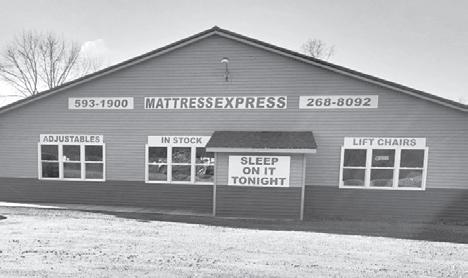


























































































































































































































































































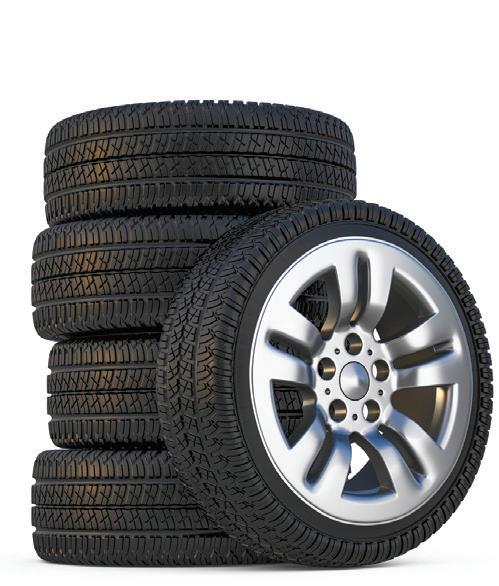






















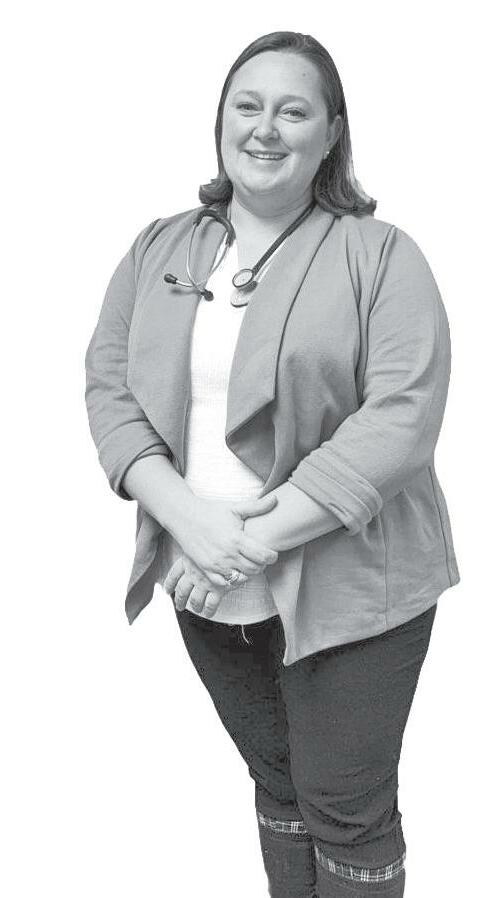
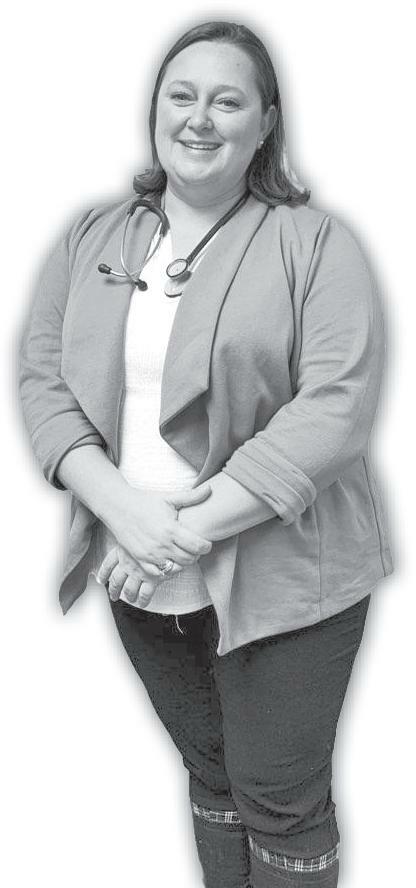





























































































































































FOR HIRE classifieds



The Bolivar-Richburg Central School District has the following coaching position available for the 2022-2023 school year: SPRING SEASON: Track Assistant Coaches (2 needed)

individual interview.

ALFRED STATION —
The Allegany-Cattaraugus-Chautauqua Fund for Women (ACC-FFW) announces the period for its grant applications is now open.












































ward sustained self-sufficiency. The amount awarded may vary based on the number of applications and funds available, up to $1,000 per grant.
FRIDAY





Pineapple, Meatloaf w/Gravy, Sour Cream & Chive, Mashed Potatoes, Baked Beans, WG Roll, Carrot Raisin Bread w/Frosting

MONDAY 2/13

Peaches & Cottage Cheese, Tuna Noodle Casserole, Peas & Carrots, WG Roll, Raisins
TUESDAY 2/14
Fruited Gelatin, Macaroni & Cheese, Stewed Tomatoes, Broccoli, WG Roll, Valentine’s Day Cake
WEDNESDAY 2/15
Beef Stroganoff over Egg Noodles, Spinach, WG Roll, Pears
THURSDAY 2/16
Applesauce, Stuffed Shells, Brussel Sprouts, WG Roll, Sugar Cookie
Applications for individual grants are being accepted through March 25. A thorough review of applications will precede award notifications in late April.
Grants are awarded based on demonstration of need and applicant explanation on how the money will be used to-
Grant applications are being accepted online at accfw.org or by emailing info@accffw.org to request an alternative application method such as a paper application or

A strong credit score is an undeniable asset for consumers. A strong standing in the eyes of potential creditors can save consumers money on relatively short-term expenses like vehicles and long-term purchases like homes.
Consumer credit is so influential in the lives of the average person that it pays to have some knowledge of what it is and how individuals can use it to their advantage.
Who issues consumer credit?
Consumer credit is typically issued by banks and retailers.
One common question consumers have is who owns credit cards, which are among the most recognizable and widely used forms of consumer credit. Many
credit card companies, including Visa, are now publicly held companies after years of being owned by banks. However, many major banks, including Capital One and Bank of America, issue credit cards as well.
What is a credit score?
According to the credit reporting agency Equifax®, a credit score is a three-digit number which represents an individual consumer’s credit risk. Credit risk refers to the likelihood that a borrower will pay their bills on time.
Scores are typically between 300 and 850, and the higher the score, the more creditworthy and less risky a consumer is in the eyes of creditors.

How are credit scores calculated?

Three different consumer reporting agen-






































cies (CRAs), including Equifax®, determine credit scores. That’s why it’s not uncommon for a single consumer to have three different scores. Those scores should be similar, and if they’re not it’s likely that one or more CRA reports has an error or errors. A host of variables are considered when determining a credit score, and these include:



• Payment history

• Credit utilization ratio, which is the amount of credit used versus the total available credit















• Types of credit accounts a consumer has. This includes revolving credit accounts, like consumer credit cards, and
installment accounts, which include mortgages and auto loans.




Credit history length





• Frequency of credit inquiries (numerous inquiries in a short period of time generally lower a consumer’s credit score)


So why is a credit score so important?
Credit scores are so significant because they can cost or save consumers a substantial amount of money.
Consumers with poor scores, which are generally considered scores between 300 and 669, may not be eligible for auto or mortgage loans and may only be able to secure credit cards with high interest rates. By contrast, consumers
The vision of the ACC-FFW is to be a resource that will provide financial assistance and open doors for women who seek continued betterment. The Fund for Women exists to invest in the lives of women in our communities in order to promote sustained self-sufficiency.
CALL 716.372.3121

TO PLACE YOUR AD








sands of dollars over their lifetimes. Managing credit is a vital component of financial planning. Knowing the basics to consumer credit can set individuals on a sound financial path.
5857 Hilltop Road,



WELLSVILLE —
While visitors to the Thema Rogers Genealogical and Historical Society’s Tale of Treasure meeting last week were interested in much of the memorabilia on display, what intrigued them most were the variety of mousetraps on the table.
Treston Hodgkins is a young Wellsville man who collects mousetraps.

In his collection he has traps dating from the 1600s through the 1930s and, like today, some are humane and preserve the animal’s life and some are brutal, dispatching the rodent with guillotine efficiency.

Hodgkins has done his homework. He notes that the familiar flat traps used today were patented in the 1890s. He’s been collecting traps for several years and has travelled as far as Pitts-

burgh to bid on traps at auctions. “A lot of people don’t know what they have,” he told the crowd while displaying a wire trap from the mid-1800s.
Most of the items brought in for display by the nearly dozen people who braved the frigid temperature to attend the meeting were recognizable memorabilia entwined with family histories.
Luanne Comstock,


president of the TRGHS and an avid collector of all things Wellsville, brought in several items including photographs and a variety of Wellsville High School letters, including some styles not familiar to those alumni in the room. Her sister and treasurer of the TRGHS, Jackie Comstock, brought in a tiny Bible dating from 1829 that belonged to Martin Luther Comstock.
“I have no idea why it
is so small,” she said. Amid the old photographs and pencils stamped with company names were some early plastic jar openers, which were part of the late Judge Jim Euken’s campaign paraphernalia.


TRGHS member and Willing town historian Tina Wightman displayed a button stamped with the famous World War II words “Remem-
ber Pearl Harbor.” She said the 1941 button was part of a bag full of buttons collected by her grandmother, Violet Reisman, who went to work at the Worthington factory during World War II. The annual Tale or Treasure meeting once more delivered entertainment and wonder to those who attended.

Valentine’s Day sparks one of the busiest shopping seasons of the year. Though it might not inspire the masses quite like Black Friday, Valentine’s Day compels millions of people to find gifts for that special someone in their lives each February. In fact, the National Retail Federation’s Annual 2022 Valentine’s Day Spending Survey found that the average person expected to devote $175 to Valentine’s Day spending in 2022.
Any heartfelt gift can light up a sweetheart’s smile on Valentine’s Day, but


certain items tend to be more popular than others on February 14. Though Valentine’s Day shoppers can always go their own way when shopping for their sweethearts, some of the more traditional gifts remain wildly popular. In its survey, the NRF found that these go-to gifts maintained their status as the most popular items for individuals to show their love for that special someone in 2022:
· Candy: Fifty-six percent of survey respondents indicated they planned to buy candy for their



























sweetheart on Valentine’s Day. Though any candy can suffice, chocolates inside a heart-shaped box tend to be especially popular in mid-February.

· Greeting cards: Greeting cards will likely never go out of style, as 40 percent of respondents indicated they would give a card in 2022.

· Flowers: The appeal of a bouquet is undeniable, prompting 37 percent of shoppers to give flowers on Valentine’s Day.
· A night out: A romantic night out is perhaps as meaningful as ever in a























world still emerging from the pandemic. So it’s no surprise that 31 percent of respondents indicated they planned to take their sweethearts out for a night on the town in 2022.
· Jewelry: Though it might rank below the others on this list, jewelry remains a go-to gift on Valentine’s Day. And with total Valentine’s Day spending on jewelry estimated at more than $6 billion in 2022, this could be where most Valentine’s Day dollars go this February.










































Homeowners who decide to renovate one or more rooms in their homes may be excited about the changes that are in store. Even simple modifications to paint color or accessories can change the look of a space. Larger renovations can produce even more dramatic effects.





When contractors provide cost estimates, they may predict how long they expect the job to take from start to finish. It is impossible to plan for every scenario, however. Jobs may be delayed for various reasons, and it’s rarely the fault of the contractor. Here are some reasons a renovation could experience snags along the way.







• Preexisting conditions: Opening up walls or removing flooring could reveal hidden problems. These include prior insect damage, leaks and water issues, asbestos, mold, or even pests. The presence of unforeseen issues will require remediation that can extend the project timeline.








• Schedule backup: Contractors often have busy schedules. When one job experiences delays, that causes a domino effect on others on the calendar.



Homeowners should realize that the estimated start date of their own project is just an estimate and not necessarily set in stone.
• Lack of materials: Builders sometimes have difficulty procuring materials from vendors. Whether it’s concrete or a special-order appliance, the contractor is at the mercy of the vendor. If there are shipping delays or other issues, the job will have to be pushed back. Many steps to a project hinge on the one before. For example, walls cannot be put up until electrical work and plumbing has been completed.










• Prior errors: Corrections may need to be made































may compromise the look and safety of the project. Issues may arise if prior renovations were not done to code.























• Obtaining permits: The application process for obtaining permits can take anywhere from a few weeks to a few months depending on the municipality and the scale of the



















































project. Long permit lead times can delay the start of the job.
• Weather: Mother Nature can affect everything from the availability of materials to the job itself, particularly if work is being done outdoors.

















• Finances: The overall cost of the job may change, especially if issues





arise during the work. If funds dry up, the project may stall.






Certain factors can affect how long a renovation project will take. Homeowners should know that timelines are estimates and not set in stone.







The last few years have not proven the most advantageous times for new car buyers.



According to the Consumer Price Index Summary from the United


















States Bureau of Labor Statistics, buyers paid 12.2 percent more for new vehicles in January 2022 than they had in January 2021. Faced with such a significant

increase in price, many drivers understandably want to keep their current cars longer than they might have initially planned.
Data released by S&P Global Mobility in early 2022 indicated that the average vehicle on the road is 12 years and two months old, which marked the highest number in the 20-plus years such information was tracked. A host of variables affect how long drivers keep their cars, but the rising cost of new vehicles has undoubtedly compelled many drivers to aspire to keep their cars for longer periods of time.




Aging cars may require a little more TLC than vehicles that are right off the dealership lot. But the following are three simple tips that can help drivers keep their cars running longer.


1. Become a more careful driver . A






careful approach when behind the wheel is safer than aggressive driving and beneficial for your vehicle. When starting, avoid revving the engine, which needlessly wears it down. When out on the road, avoid rapid accelerations, which also contributes to needless wear and tear. Even excessive idling can adversely affect the engine, so keep winter warm-ups to around 30 seconds to prevent damage to engine components.

2. Know when and how to fill up. Every driver has likely visited a filling station when an oil tanker is busily filling the tanks. That’s traditionally been considered a less than ideal time to fill up, as the theory is that filling the tanks stirs up sediment that

could then find its way into consumers’ gas tanks, adversely affecting their vehicles. However, that’s often dependent on the station itself and how much its owners prioritize maintenance of the tank and filtration systems.



Drivers who trust their local station owners can likely fill up when the tankers are present without worry. In addition, avoid topping off once the nozzle clicks when filling up. The U.S. Environmental Protection Agency notes that topping off is harmful to the planet and the vehicle, as gasoline needs room to expand. When you top off, the extra gas may damage the vapor collection system and cause the vehicle to run less efficiently.
3. Change oil more
frequently as the vehicle ages. It’s true that modern vehicles no longer require oil changes for every 3,000 miles driven. However, as vehicles age, drivers and their vehicles’ engines may benefit from more frequent oil changes than the owner’s manual necessarily recommends. Oil changes remove dirt and metal particles from the engine, potentially contributing to a longer life expectancy. More frequent changes can be especially beneficial for vehicles that are routinely driven in stop-and-go traffic. Rising vehicle costs have compelled many drivers to keep their cars longer than they initially planned. Some simple strategies can help drivers achieve that goal.








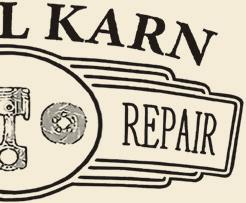




People who see their doctors for routine wellness exams typically undergo certain blood tests during that process. In addition to a complete blood count (CBC), doctors frequently request lipid panels that indicate cholesterol and triglyceride levels.
While cholesterol is a familiar term, triglycerides may be more of a mystery to the average Joe.
According to the Cleveland Clinic, triglycerides are lipids (waxy fats) that provide energy to the body. The body produces triglycerides and also gets them through food.
Triglycerides are actual fats, while cholesterol is a waxy, odorless substance made by the liver. Since cholesterol cannot mix or dissolve in the blood, the liver puts cholesterol together with triglycerides
to move the fatty mixture (lipoproteins) throughout the body. When a person eats, any extra calories not used for energy are converted into triglycerides, which are stored in fat cells. Later, hormones release these triglycerides as energy between meals. Individuals who regularly eat more calories than they burn, particularly from high-carbohydrate foods, may have high
triglycerides.
According to the Mayo Clinic, high triglyceride levels may contribute to a hardening or thickening of the arteries, which is a condition known as arteriosclerosis.
For healthy adults, normal triglyceride levels should be under 150 mg/dL. Values of 151 to 200 mg/dL are considered borderline high, and anything over
201 is high or very high.

In addition to arteriosclerosis, high triglyceride levels can raise the risk of cardiovascular disease and pancreatitis.
Overeating, having a family history of high cholesterol, drinking alcohol to excess, being overweight or obese, and having unmanaged diabetes can contribute to high cholesterol levels.

Smoking, the presence of thyroid disease and







certain medications, like diuretics and hormones, also may raise the risk of developing high triglyceride levels.
Lifestyle changes similar to those recommended to manage high cholesterol can help people lower their triglyceride levels. These include eating a nutritious diet, doing aerobic exercises regularly and maintaining a moderate weight. Individuals should avoid simple carbohydrates, such as those made with white flour, fructose, trans fats, and hydrogenated oils or fats.
Low triglyceride levels are not typically a cause for concern. But in these instances malnutrition or malabsorption could be the culprit.
Individuals should undergo routine health screenings to determine if high triglycerides are part of their lipid panels.


























































































































































































































































